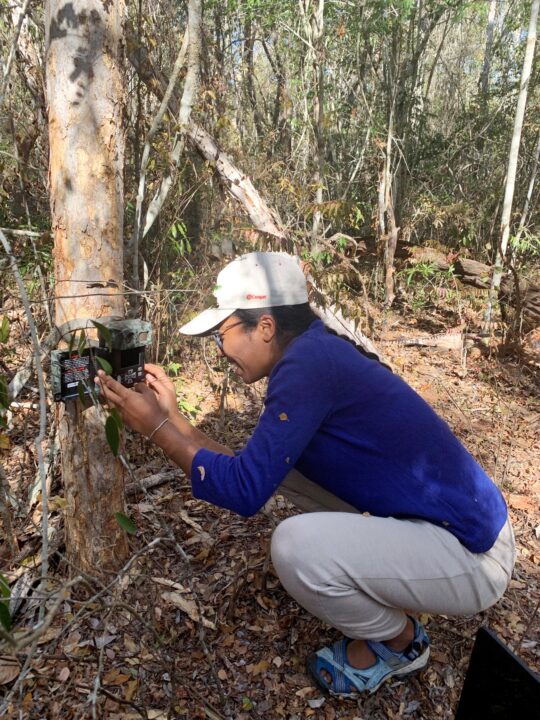
Every year, fires threaten and destroy the remaining natural habitats of Madagascar. Our project area in the Kirindy Forest is also acutely threatened by this. Due to slash-and-burn agriculture, deforestation in the region has steadily increased since 2010 and reached a sad peak in 2018 with almost 10,000 ha within the Aire Protégée Menabe Antimena (APMA).
We therefore increase our support for the maintenance of forest controls. As the Kirindy Forest is an important tourist attraction for wildlife viewing, its loss would be a disaster for tourism and, thus, for the economy in the Morondava region.
Moreover, the current development in Kirindy and the other dry forests of APMA is an ecological threat to all of Madagascar, as the area is home to more than 200 vascular plant species and the only refuge in the world for two mammal species: the Madagascar Giant Rat (Hypogeomys antimena) and the Madame Berthe’s Mouse Lemur (Microcebus berthae).
Can destroyed forest areas be restored?
With the support of the Fondation Yves Rocher and the Daimler Pro Cent Initiative, we have begun restoring burned areas in Kirindy with our partner CNFEREF. Altogether, we have planted 40 hectares and almost 50,000 trees in the last two years, with many local helpers involved in the project and providing the workforce for the planting activities. — The goal of the restoration is to restore the ecosystem and to return these areas to their original condition as closely as possible. — Whether and to what extent this can succeed requires accompanying evaluation and studies on the development of the reforestation areas.
In this context, we supported an initial study in 2022 to scientifically accompany the development of the afforestation areas. The basic idea here is also to compare with original and intact, as well as with successional areas (natural return of site-typical plants). In the long term, this provides information on whether active intervention with human selective enrichment afforestation is more efficient than natural succession.
The study was conducted by Sabrina Maminirina, a student at the Ecole Supérieure des Sciences Agronomiques of the University of Antananarivo, and supervised by Dr Voahirana Razafintsalama.
Sabrina studied a total of 3 different areas:
- 1. Natural forest area
- 2. Burned area, reforested in 2020
- 3. Burned area without further interventions (natural regeneration, succession area)
Camera traps and acoustic recorders are used on all plots to document faunal diversity: Which species exist in the destroyed areas and which species recolonise the formerly burned areas first, if at all? The second part of the study includes an extensive botanical inventory of the three plots. In addition to floristic species composition, the study will also examine how many individuals of which plant species occur per hectare and how growth rates and forest structure differ. In the long term, the forest structure of the destroyed areas should increasingly approach its original state. For reforested areas, we expect a rapid adaptation to the original condition.
The project is particularly interesting in that it should provide answers as to which animal species may contribute to natural and human-assisted forest regeneration through seed dispersal, thereby increasing the diversity of tree species. Here we expect mainly lemurs but also birds such as parrots. The first results have detected an important seed disperser, the Verreaux’s Sifaka, after one year at the reforestation site.
Verreaux’s Sifakas feed on over 100 plant species in the Kirindy Forest and thus have great potential to increase the diversity of the reforested area. The data are currently still being evaluated, but we look forward to the study’s further findings to align our conservation measures in the Kirindy region in the long term and sustainably maintain the diversity of these unique forests.





Find out more about our activities:
https://chancesfornature.org/forschung-und-surveys/
https://chancesfornature.org/schutz-des-kirindy-wald/


